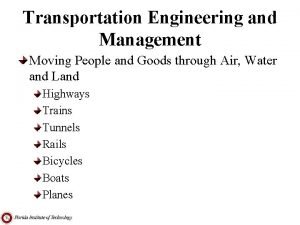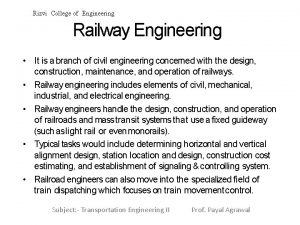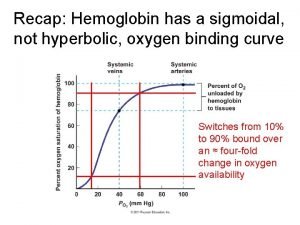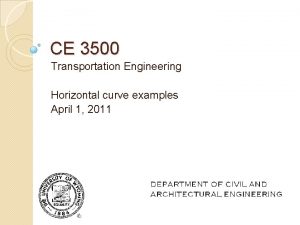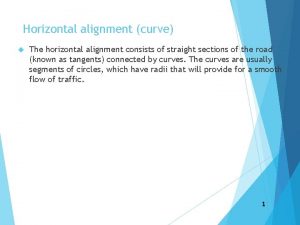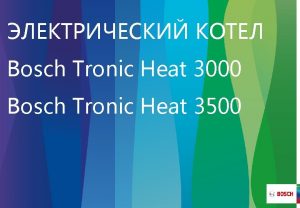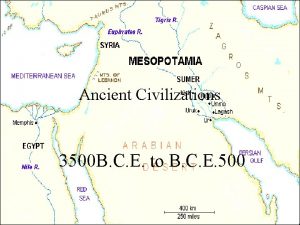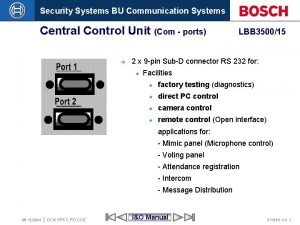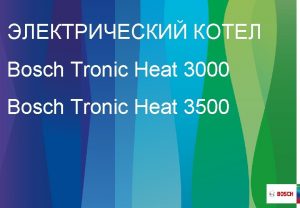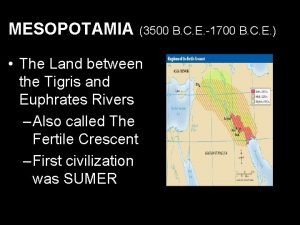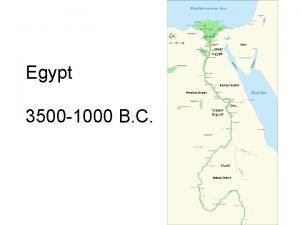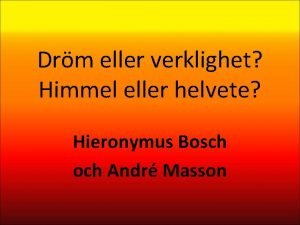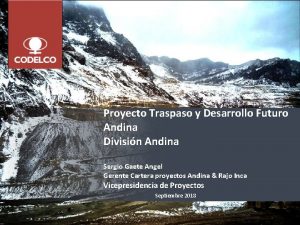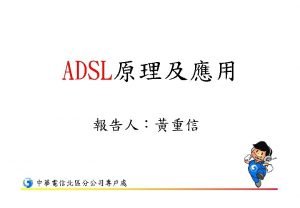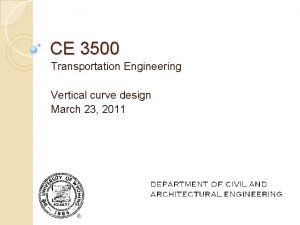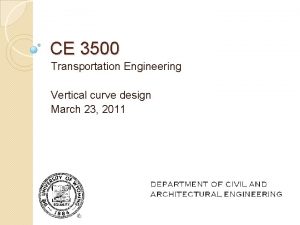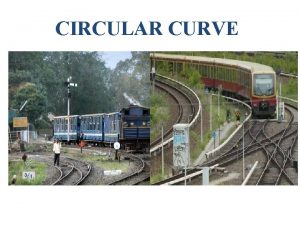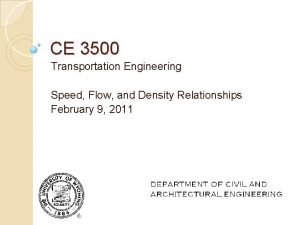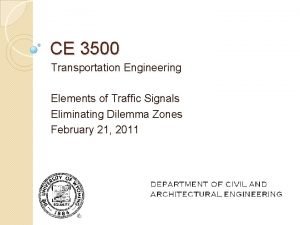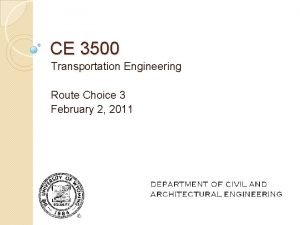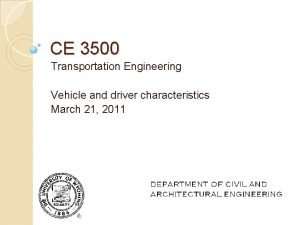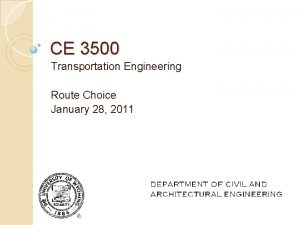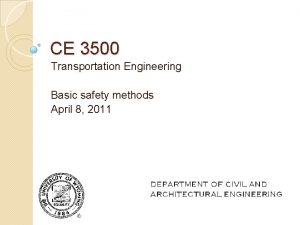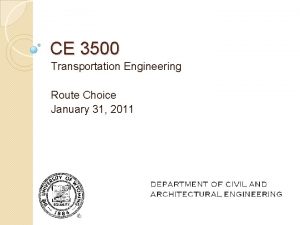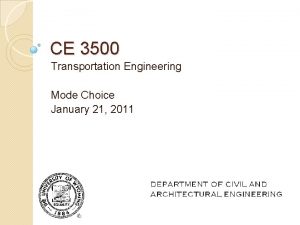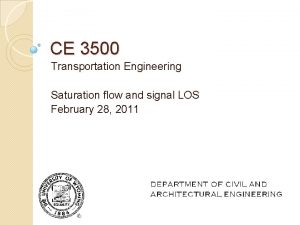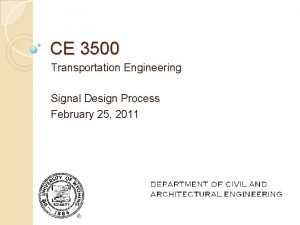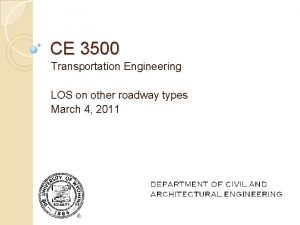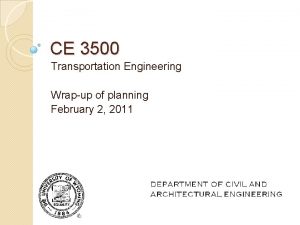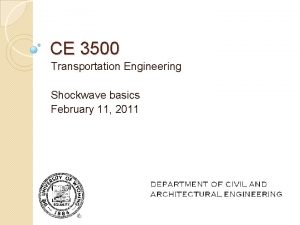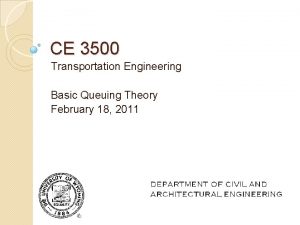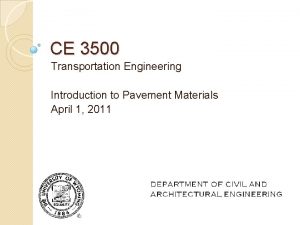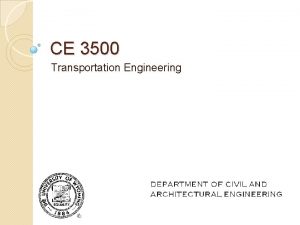CE 3500 Transportation Engineering Horizontal curve concepts March

































- Slides: 33

CE 3500 Transportation Engineering Horizontal curve concepts March 28, 2011

ANNOUNCEMENTS

Homework 4 due next Wednesday Wyo. SUITE forms No class Wednesday.

EVALUATION RESULTS

Pace: Slow: 1 OK: 23 Fast: 2

Most unclear concept: Signal design was the clear winner here. Recommendation: take a close look at the solutions to Homework 3

Most helpful things: Examples in class Things I can do better/other comments: Even more examples Even more homework Powerpoints can be ambiguous Notation for grade: %G vs G Funnier examples in class Review before next exam

REVIEW

The shape of a vertical curve is usually parabolic. Why? PVI A = – 8 G 2= -5 G 1= +3 L PVC PVT

Design a vertical curve that can be safely traversed at 70 mi/hr, assuming 2. 5 s reaction time and coefficient of braking friction 0. 348 G 1= -2 G 2= +4 PVI: 345+10 Elevation 7250 ft

Coefficient of friction is 0. 348; only one direction of travel from left to right. What is maximum safe speed? G 2= -3 G 1= +5 500 ft

Step 1: Find SSD from curve length: SSD < SSD > L: L: G 2= -3 G 1= +5 500 ft

HORIZONTAL CURVE CONCEPTS

Now switching to an overhead view. . . what shape should a horizontal curve have?

Now switching to an overhead view. . . what shape should a horizontal curve have?

Point of intersection Point of tangenc Point of curvature

PI PT PC Intersectio n angle Radius of curvature

D Tan gen t len gth PI PC D/2 PT h t g en l d or Ch D R

PI External distance D Middle ordinate PT T PC D/2 C D R

PI D E T PC D/2 PT M C D R

Another question: what angle is swept out by 100 ft of roadway? This is the degree of curve D 100 ft R D

In radians In degrees 100 ft R D

Assorted formulae PI T D/2 PC D E M PT C D R Curve length

How do we describe a horizontal curve? At PC, PT, and every whole station in between: provide deflection angle and chord length PT PC Deflection angle is measured from the initial tangent

How do we describe a horizontal curve? At PC, PT, and every whole station in between: provide deflection angle and chord length PT PC The chord is measured from the last whole station (or PC for the first point)

EXAMPLE

Given a 4 -degree curve with an intersection angle 55° 25' with PC at station 238+44. 75. . . what is the length of curve, the station of PT, and the deflection and chord lengths?

Assorted formulae PI T D/2 PC D E M PT C D R Curve length

Curve length: use and R = 1432 ft and L = 1385 ft PI T D/2 PC D E M PT C D R

To find deflection angles and chord lengths, apply the formulas to a segment of the curve: PT D/2 PC R D

In this example, PC is at 238+44. 75, so the distance to the next whole station is 55. 25 ft. Using L = 55. 25 gives D = 2. 21° and PT D/2 PC R D The deflection is half of this, or 1° 6'18"

Using the chord formula: PT D/2 PC R D

Final answer: Station 238+44. 75 239+00 240+00. . . 252+00 252+30. 17 Deflection angle 0 1° 6'18" 3° 6'18". . . 27° 6'18" 27° 42'30" Chord length (ft) 0 55. 25 99. 98. . . 99. 98 30. 17
 March march dabrowski
March march dabrowski Transportation engineering
Transportation engineering Transportation engineering by rajesh bhagat
Transportation engineering by rajesh bhagat Transportation engineering definition
Transportation engineering definition Transportation engineering definition
Transportation engineering definition Transportation engineering
Transportation engineering Transportation engineering
Transportation engineering Transportation engineering
Transportation engineering Hyperbolic vs sigmoidal curve
Hyperbolic vs sigmoidal curve S curve and j curve
S curve and j curve Types of balanced occlusion
Types of balanced occlusion J curve vs s curve
J curve vs s curve Thermogram the horizontal portion in the curve indicates
Thermogram the horizontal portion in the curve indicates A horizontal curve is designed with a 2000-ft
A horizontal curve is designed with a 2000-ft Simple horizontal curve
Simple horizontal curve Bosch tronic heat 3500 error 11
Bosch tronic heat 3500 error 11 3500 / 500
3500 / 500 3500 bce means
3500 bce means Wheel 3500 bc
Wheel 3500 bc Philips lbb 3500
Philips lbb 3500 3500/300
3500/300 Bosch tronic heat 3500 24 kw
Bosch tronic heat 3500 24 kw 3500 bce
3500 bce 3500/1000
3500/1000 Comp 3500
Comp 3500 Comp3500
Comp3500 Monotheism
Monotheism Ibm ts 3500
Ibm ts 3500 1500000/6000
1500000/6000 Mesopotamia jeopardy
Mesopotamia jeopardy Bosch tronic 3500
Bosch tronic 3500 Aironet 3500 presentations
Aironet 3500 presentations Nodo 3500 andina
Nodo 3500 andina 3500/3000
3500/3000






